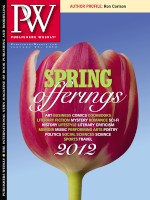Even as more consumers buy dedicated digital reading devices and tablets, a hybrid market for books is developing in which readers will buy both print and digital books. That was one of the main conclusions fromVerso Digital’s “2011 Survey of Book-Buying Behavior,” presented by the company’s Jack McKeown at last week’s ABA Winter Institute held in New Orleans.
According to McKeown, the data, from Verso’s third annual survey, suggest that print and digital books will coexist for a long time. McKeown based that prediction on several trends: the number of readers who do not intend to buy a reading device seems to be solidifying at around half of all readers, and even among digital device owners the preference seems to be to buy both print and digital books. According to the survey, conducted November 30–December 4, 51.8% of book buyers said they are unlikely to buy a reading device, up from 49.0% in the 2010 survey and 40.2% in the 2009 survey. (In the most recent survey, 15.8% of book buyers already owned a reading device, up from 2.9% in 2009.)
In the most avid book-buying group—those planning to buy 10 or more books—24.9% said they will buy a print book and 29.6% said they will buy e-books. Of those planning to buy five to nine books next year, 17.4% will buy print and 17.9% digital, while the ratio favors print among those buying three to four books by a 20.4% to 15.6% margin. Measured another way, 76% of device owners said they plan to buy at least one print book in the year, and 24% will buy 10 or more print books.
Consumers splitting their book purchases among formats reflects the broader trend of consumers buying books in different venues. The survey found that 49% of book buyers shop online, 43% shop at the bookstore chains, and 36% buy books at independent stores. Moving away from the focus on e-books, the Verso survey showed what other studies have—that bookstores remain a principal place where readers “discover” books. Bookstore staff recommendations trailed only personal recommendations as a way book buyers learned about a book. And again, as other surveys have indicated, blogs and social networks finished at the bottom of ways readers learn about books.
The Verso survey also found that most Borders customers are still up for grabs. While about 35% of former Borders shoppers have already found new places to buy books (divided among online, chain, and indie outlets), the majority have still not shown a strong preference for a new option. Factors former Borders shoppers are considering when looking for a new book-buying outlet are discounted bestsellers (35.7%), travel time (31.6%), and selection (31.0%). A rewards program and ease of ordering from a Web site finished further down the list. McKeown observed that “the disappearance of Borders is an unprecedented opportunity [for independents]. This is a tipping point.”



 Volume 259
Issue 04
01/23/2012
Volume 259
Issue 04
01/23/2012





